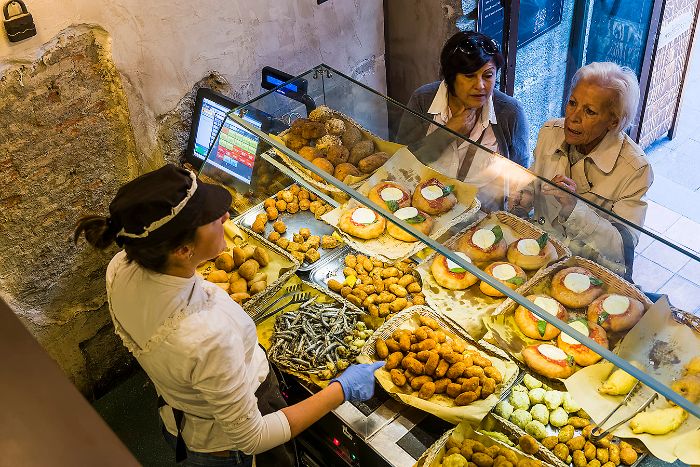Street food is an essential part of the culture and traditions of Naples, and exploring the city’s food stalls is a must for any visitor. Here are some of the top spots to check out in the historic center:
Il Cuoppo Friggitori Napoletani: Located on Via San Biagio Dei Librai, this street food stand offers a variety of fried seafood, vegetables, and mozzarella balls, all wrapped in a paper cone. Try the generous portion of mixed fried seafood for just €6.
Friggitoria Vomero: This decades-old fried snack bar near Naples’ funicular is a great stop for arancini, zeppole, omelette di maccheroni pasta, fried potatoes, and zucchini flowers, with prices ranging from €0.20-2 apiece.
Pizzeria Di Matteo: This family-run pizzeria on Via Tribunali near Piazza San Gaetano is the place for traditional Neapolitan pizza, both oven-baked and fried. Even Bill Clinton visited during his trip to Naples in 1994. The Margherita pizza is a must-try, with prices ranging from €2-6.
DE’ Figliole: This spot, in the historical center since 1860, serves the best fried pizza in Naples. Watch the women in the kitchen stretch the dough and pick your favorite calzone-looking or flat pizza. Prices range from €4-5.
Naples’ street food scene owes its fame to the city’s rich natural surroundings, which provide fertile volcanic soil, buffalo dairies, and access to the Mediterranean Sea. The resulting dishes, such as freshly-baked dough, deep-fried seafood, milky mozzarella balls, stuffed rice suppli, and freshly-made tomato sauce, are some of the world’s most revered, and also budget-friendly.
Exploring the mobile cooking-stations, kiosks, cafés, tiny eateries, and food markets of Naples’ streets is a must for anyone seeking a true taste of the city’s culture and traditions.

































